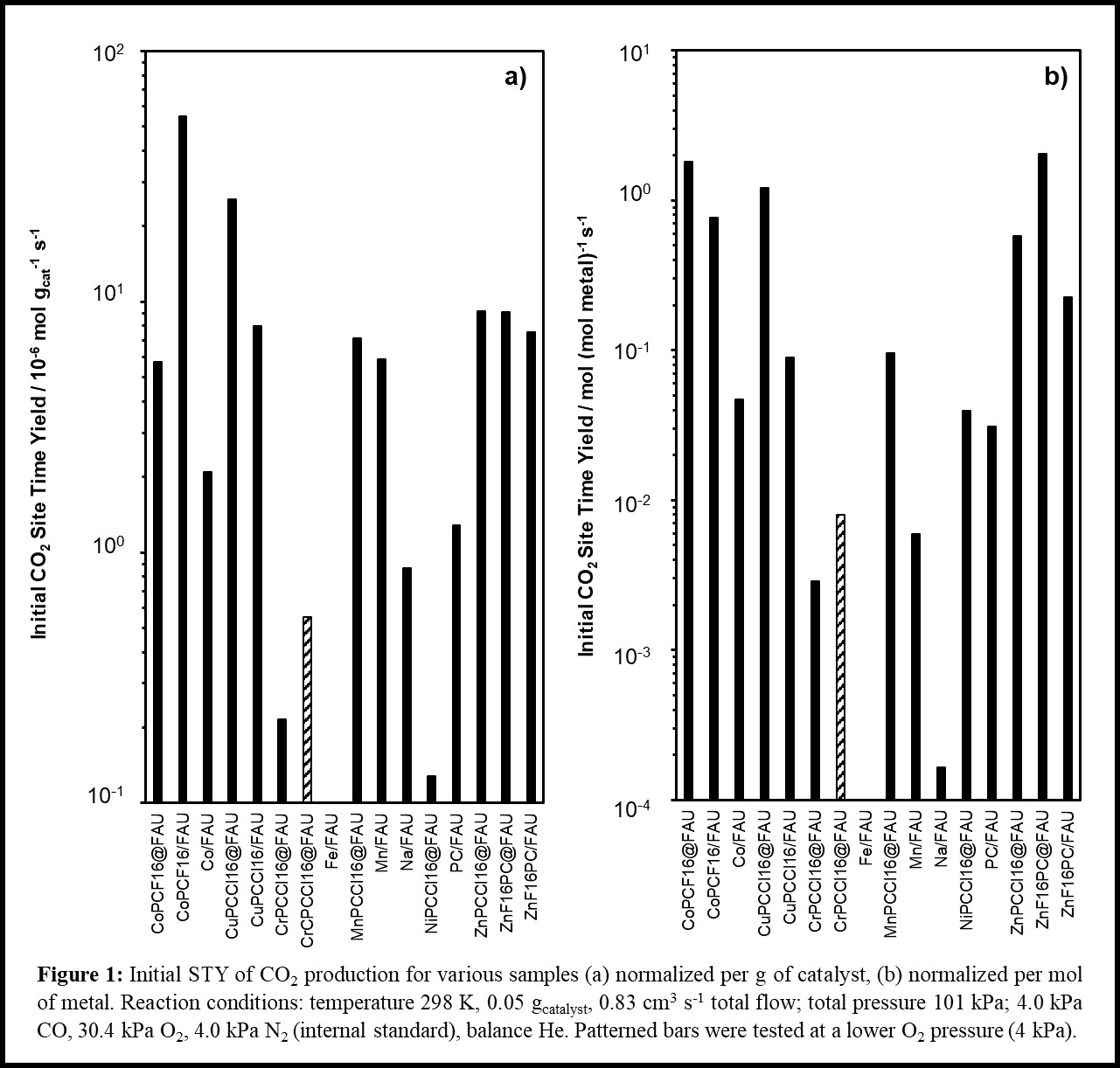Blah Blah Blah.
AIChE Annual Meeting
2023
2023 AIChE Annual Meeting
Education Division
Hands-on Activities for Learning ChemE
Monday, November 6, 2023 - 12:00am to 12:16am
Metal-containing porous catalysts have inherent heterogeneity in metal species, complicating efforts to compare reactivity across varied catalyst formulations without first quantifying active sites. The supercages of faujasite zeolites (FAU) are large enough to confine metal phthalocyanines (MPCs), together serving as a well-defined active center for experimental and computational catalyst characterization. Metal perchloro-, perfluoro-, and perhydrogenated phthalocyanines (MCl16PC, MF16PC, and MPC; M = Cr, Mn, Fe, Co, Ni, Cu, Zn), were encapsulated into FAU via hydrothermal synthesis (MPC@FAU). MPC@FAU catalysts were characterized using in situ diffuse reflectance UV-Visible and X-ray absorption spectroscopies, and ex situ electron paramagnetic resonance spectroscopy. After confirming the zeolites were crystalline and the MPC complexes were intact, MPC@FAU catalysts were tested for aerobic CO oxidation at 298 K. Initial site time yields (STYs, per mol of metal) for MPC@FAU were an order of magnitude greater than the analogous metal-ion-exchanged zeolites (by ~50×, 4 kPa CO, 30 kPa O2, balance He). Initial STYs for CO oxidation are also higher (by 2-10×) for MPC@FAU samples than the corresponding samples with the same MPC deposited on the external surface of FAU, suggesting increased reactivity due to encapsulation within FAU. Binding energies for CO and O2 calculated with density functional theory evince correlations between the initial STY and the difference between the binding energy for CO and O2, with optimal MPC@FAU catalysts (Co, Zn) binding CO and O2 with similar strengths. This activity decreases with time on stream for all MPC-containing catalysts tested, though not due to occlusion of pores with adsorbed CO, O2, CO2, or water; this unexpected deactivation is a topic of ongoing research. The reactivities of MPC@FAU catalysts for gas-phase CO oxidation at ambient temperature, along with ongoing studies of other societally relevant chemistries, indicate that MPC@FAU catalysts can serve as model catalytic materials for gas-phase reactions.


